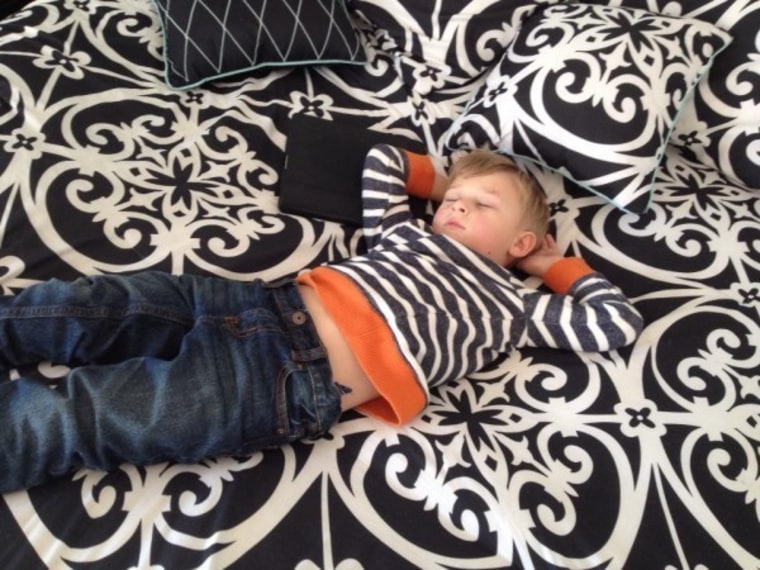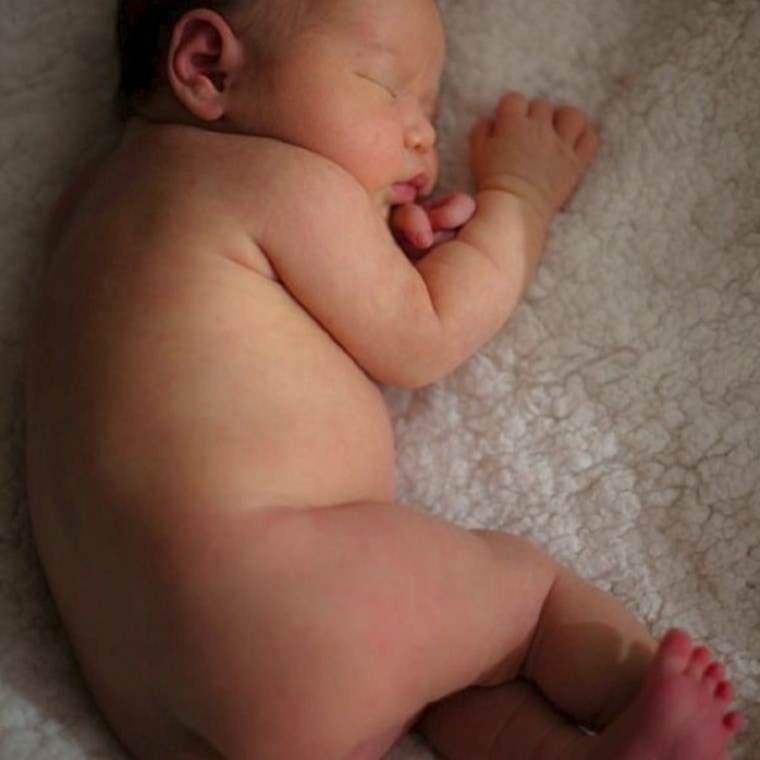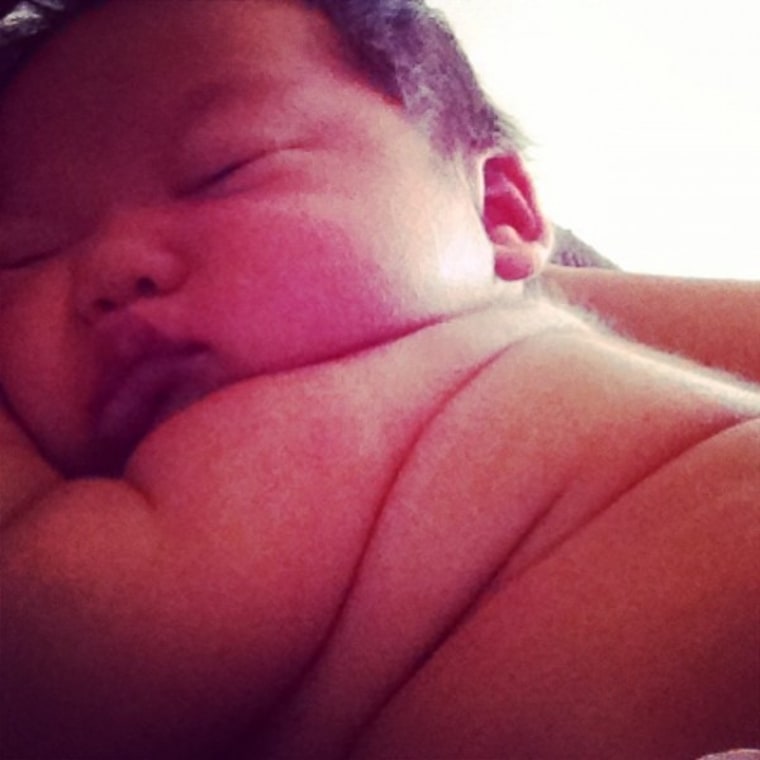We need it, and boy, do they need it too. But what’s the best way for getting our babies and kids to sleep each night so we can get the shuteye we need to power through another day?
Our TODAY Parenting Team is armed with all sorts of suggestions. Here, contributors share their most effective tips and tricks.
1. They can do it. (Wendy Hunter, MD @ BabyScience)

“As a pediatrician I can tell you that babies can endure eight hours without any parental intervention sometime between 4 and 6 months of age. Their stomachs are big enough to store sufficient food for the night, and their sleepy minds don’t need your attention. So every baby is capable of sleeping through the night.
Never miss a parenting story with the TODAY Parenting newsletter! Sign up here.
“Babies just don’t want you to know that they are capable of soothing themselves back to sleep. Naturally, many parents expect that their little one needs their help. When you first hear your baby fussing in the middle of the night do you jump out of bed to hold, feed and comfort your angel? Most babies love this nocturnal attention and learn to rely on someone else settling them down for the night. But it’s sleep-sabotage. Expect your baby can’t sleep and they won’t.”
2. Look for sleep readiness. (Wendy Hunter, MD @ BabyScience)
“When your darling remains awake at the end of the day’s last feeding for two or three nights in a row, that’s your cue to begin to allow her to fall asleep on her own. As her eyes are just beginning to get heavy, place her in bed. You can place a hand on her gently, but leave the room for at least 30 seconds, gradually extending this time.”
3. Relax before bed. (Ingrid Y. Prueher, The Baby Sleep Whisperer)
“Create a calming bedtime routine, whether for yourself or your infant. About an hour before bed, start your routine. The routine could include readying things you’ll need the next day — like what clothing you’ll wear. Before bedtime, initiate quiet time and avoid using electronic devices as they can make it difficult to sleep. The routine should include relaxing activities, like listening to calming music, reading or a bath.”
4. Let go of that nap. (Amanda Mushro, Questionable Choices in Parenting)

“Whatever my well-intentioned but misguided reasons for holding on to (my son's) nap for too long were, I am happy to say that life got a lot better around here (after we gave it up). I took my (younger) daughter upstairs for her nap and he headed to his room for 'quiet time.' However, quiet time really didn’t last too long because he’d come downstairs to tell me that 'daddy penguins take care of the eggs while the mommy penguin hunts.' Thanks, Captain Random. So we’d do things that we couldn’t do while my hurricane daughter was awake, like play Candy Land 584 times, or color without her eating the crayons. So he and I would snuggle and play rather than me being so angry he wasn’t sleeping.”
5. Feed thy babe. (Elaine S.)

“Feed your baby's belly. The more they're satiated and porked up, the longer they will sleep. I doubt many parents will argue with this. If you're still breastfeeding, it doesn't hurt to 'top them off' and have them sleep feed before you hit the hay yourself. Extra mileage, I say! If the baby sleeps, you sleep.”
6. Consistency counts. (Saarah Samadani)

“Regardless of what sleep method you choose, you need to be consistent. Anyone in the family who is responsible for putting your child to sleep, must do the same thing when putting your child to sleep for naps or nighttime. Having different methods for each person will become confusing to the child, and will result in inconsistent sleep.”
7. Keep a routine. (Saarah Samadani)

“Now by a schedule or routine, I don’t mean a hard-core military stick-to-the-minute schedule of events (unless that works for your family). However, each day should have some sort of consistency from morning wakings, to naptimes, to nighttime sleep. Doing this early on — even starting at a week old — can really help to train their circadian rhythm which helps to control eat, wake, and sleep cycles. Figure out which time you’d like the household up, and let that natural sunshine into your home to help wake everyone up. That way, once the nighttime hours approach (and the sunlight fades), each child will naturally begin to get tired due to the lack of sunshine coming into the home. Also, depending on age, your child will require a certain number of naps/rest time(s) throughout the day.”
8. Let it go when the little one is sick. (Saarah Samadani)
“Of course there are always exceptions to sleep time, wake time, schedules AND even sleep training. It’s when your child is under the weather from teething, fevers, traveling, loss or whatever may affect them from a 'normal' state. I take this extra time to snuggle, cuddle, and hydrate/feed them as much as possible. AND ... I’m extra quiet tiptoeing out of the room once they’ve fallen asleep!”
9. Wind down with crayons. (Ingrid Y. Prueher, The Baby Sleep Whisperer)

Coloring is a great relaxation tool for adults as well as kids. Many high-quality coloring books are available with a huge variety of designs, patterns and themes for adults and children. One popular book is “The Can’t Sleep Colouring Book,” which has a large assortment of images to color, including planets, unicorns, mountains, flowers, animals and geometrics. “The RxArt Coloring Book” is another book that was designed to help people relax, especially children going into the hospital.”
10. Stay cool. (Ingrid Y. Prueher, The Baby Sleep Whisperer)
“Keep bedrooms cool and comfortable. The best temperature for sleep is between 68 and 72 degrees.”
11. Feel free to ignore everyone’s advice. (Kelly Guinn)

“Here's what I wish I had done as a new mom. I wish that I had ignored the anecdotes. OH THE ANECDOTES. Every third person and your and great aunt Myrtle will tell you how they got their 3-week-old to sleep through the night by swaddling/burping/bath/lotion/some other antiquated technique that you would never ever try.
"Exactly zero anecdotes are helpful. Their baby is not your baby. Your baby is a person all his or her own with unique needs. And that's OK. (This is not to say that you shouldn't seek out the actual helpful advice of people you know and trust. Advice is helpful. Anecdotes make you compare yourself and comparison is indeed the thief of joy.)
"So the next time someone says to you, 'My baby slept through the night at three weeks!' I want you to smile, nod, and keep on keepin' on. ... Just give yourself, and those gorgeous bags under your eyes, some grace right now. Because you're a good mom — and you'll sleep again. Promise.”